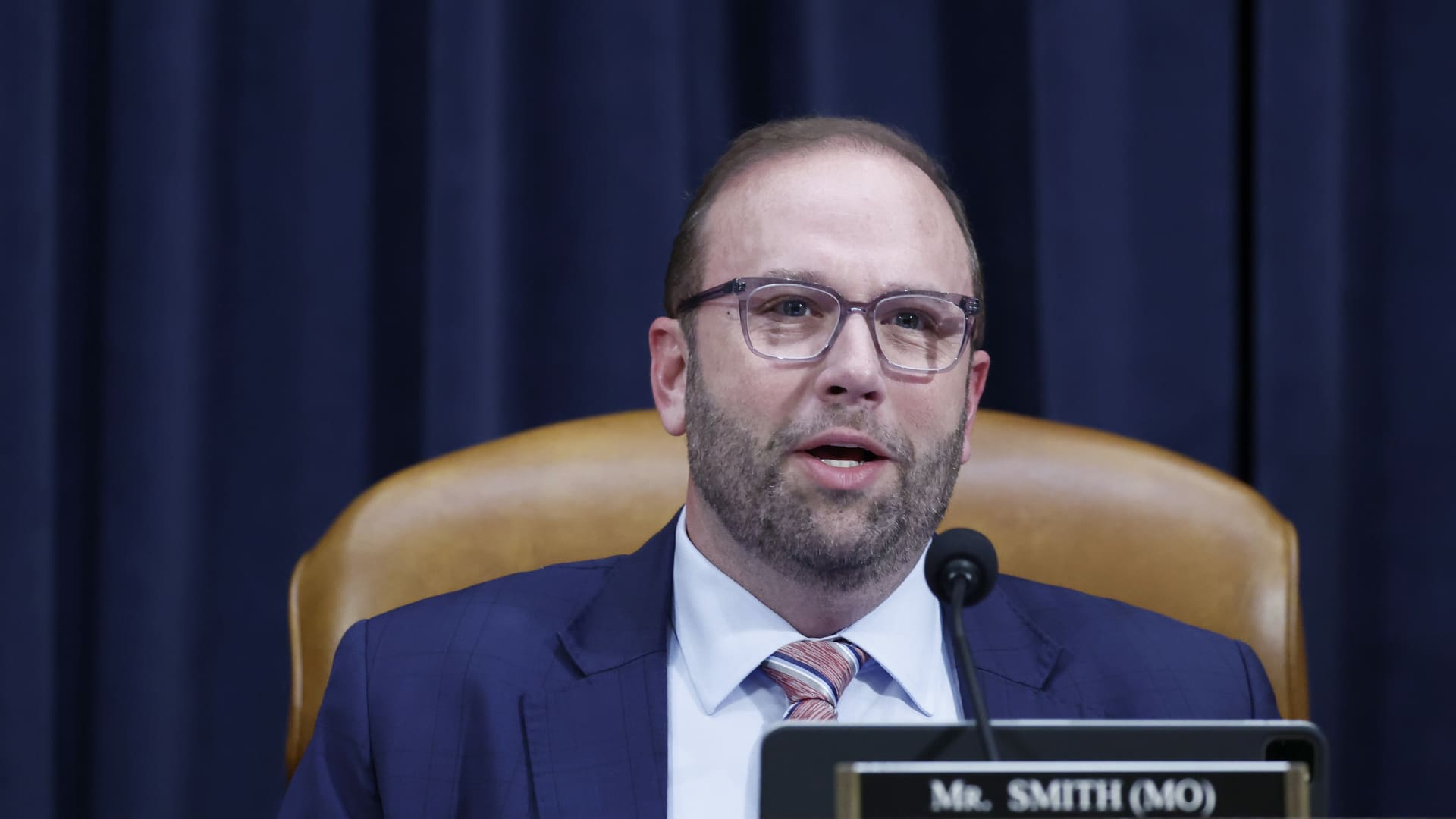Employers in the United States added 303,000 jobs in March, soaring past expectations and reflecting renewed strength in a labor market that continues to prop up the broader U.S. economy.
The unemployment rate ticked down to 3.8 percent last month, the Bureau of Labor Statistics reported Friday, extending the longest stretch of unemployment below 4 percent in five decades.
The jobs market is charging ahead in 2024, churning out more jobs per month on average than before the pandemic. Job growth in March was notably higher than the average monthly gain over the past year, which was around 231,000, according to the agency.
“This was a very strong jobs report across a variety of metrics,” said Nick Bunker, economic research director at the jobs site Indeed. “It gives really positive implications for the short-term health of the labor market and the labor market’s capacity to bounce back from the pandemic.”
President Biden has been making an election-year case that economic gains made during his administration help all voters, and he trumpeted Friday’s jobs report.
“Today’s report marks a milestone in America’s comeback,” Biden said in a statement about the job gains. “Three years ago, I inherited an economy on the brink. With today’s report of 303,000 new jobs in March, we have passed the milestone of 15 million jobs created since I took office.”
Recent data indicates that Americans’ gloomy mood about the economy has lifted, with consumer sentiment in March up 28 percent from a year earlier, but those better vibes have yet to translate into political enthusiasm. Biden is trailing former president Donald Trump in six of the seven most competitive states in the 2024 election, according to a Wall Street Journal poll from late March, in part because of voter dissatisfaction with the economy.
Major stock indexes all edged up after markets opened Friday, as investors cheered on the good news.
Workers benefited in March from rising wages and more work hours. Average hourly earnings accelerated in March to $34.69 per hour, which is up 4.1 percent from the previous year. Wages have consistently beat inflation since last May after years of falling behind.
Service-related industries continue to prop up the greater economy and contribute to low unemployment that has benefited workers.
Health-care job growth accelerated, adding 72,000 jobs in March largely in hospitals, residential care facilities and nursing homes in a reflection of surging demand from the aging baby boomer population. Government payrolls expanded by 71,000, mostly in local government, as the sector has remained flush with cash.
Leisure and hospitality grew by 49,000 jobs and, in a major milestone, finally caught up to its February 2020 pre-pandemic levels, as demand for dining out and other experiences has continued to swell.
Job growth has also begun to spread into industries that had gone slack over the past year.
Construction added 39,000 jobs in March, more than double its monthly average gain of the past 12 months, surprising experts because that industry tends to be sensitive to higher interest rates. That could be due to the infusion of Biden administration spending on large-scale projects, such as semiconductor plants. Retail added 18,000 jobs, mostly in general-merchandise employers, such as big-box stores.
“There’s a pocket of strength in the U.S. labor market right now,” Bunker said. “Part of it could be that some sectors that have slowed down from 2022 to 2023 are starting to grow again. They’re working through some of the constraints of higher interest rates.”
Still, many rate-sensitive industries appear to remain cautious about hiring as they wait for the Federal Reserve to cut interest rates this year. Employers in manufacturing; wholesale trade; warehousing and transportation; information; professional and business services, which includes parts of tech; and financial services saw little or no growth in March.
The latest job figures will shape the Federal Reserve’s review of how the economy is performing. For the past two years, the central bank’s overwhelming focus has been on fighting inflation, namely through an aggressive interest rate campaign that brought borrowing costs to the highest level in more than 20 years. But officials are also keeping close watch for any signs that their moves have put too much pressure on the economy, such as if the job market starts to weaken or employers pull back, fearing tougher times ahead.
Inflation has come in higher than expected since the start of the year. If that turns out to be a lasting trend, the Fed may end up changing its plans this year for three possible interest rate cuts, which markets expect could start in June.
Consistently, the message from Fed leaders has been that they need more time to see how the data unfolds. Friday’s report was no exception.
“There is no weakness in the job market which would impel the Fed to quickly cut, but no tightness which would prohibit a cut either,” Preston Caldwell, chief U.S. economist at Morningstar, wrote in an analyst note. “Fed decisions in upcoming meetings will hinge mainly on the inflation data.”
Lately, Americans have been spending big on vacations, dining out and entertainment. And that demand is driving employers to hire in those industries.
Hiring in the leisure and hospitality sector is vastly outpacing the overall labor market. Employers made the most hires on record in arts, entertainment and recreation in February, according to a separate report by the Labor Department released Tuesday.
The leisure and hospitality industry has added 458,000 jobs in the past year, accounting for nearly 1 in 6 new jobs across the country.
More than 53,000 restaurants opened last year, up 10 percent from 2022 and exceeding pre-pandemic levels, according to data from the online review site Yelp. That has helped boost hiring across the board, in entry-level positions as well as managerial roles.
Restaurateurs say it is finally becoming easier to find employees after years of worker shortages, relieving the pressure to raise wages. A major pickup in immigration has also helped fill many long-standing openings, with 3.3 million immigrants arriving in 2023, according to the Congressional Budget Office.
Brent Frederick, who owns five restaurants in Minneapolis and St. Paul, has hired 40 people in the past month.
“There have been pullbacks in tech and other industries, and we’re noticing that a lot of people are landing back in hospitality,” he said. “There’s been influx in the pool of people available to us.”
The industry has been experiencing geographic changes, with restaurants following remote-work customers who moved to suburbs from cities.
That shift to the outskirts of town is expected to fuel brisk hiring in hospitality this year. Che Fico, one of San Francisco’s top restaurants, recently expanded to Menlo Park. Perry’s Steakhouse & Grille, which has 21 locations nationwide, is heading to Vernon Hills, outside Chicago. And Old Ebbitt Grill, a D.C. institution near the White House, is opening its first spinoff in Reston, Va.
“We’re calling it our ‘sexy sister in the suburbs,’” said Jeff Owens, chief financial officer at Clyde’s Restaurant Group, which operates 11 Washington-area restaurants. (Clyde’s is owned by Graham Holdings, which owned The Washington Post until 2013.)
Last month, Jaime James of Minnesota picked up a second job as a bartender on top of her day job in health care. The single mother said she hadn’t worked in the service industry in a decade but needed the extra cash. She rents a $2,000-a-month apartment in a safer and cleaner building than her previous mice-infested one.
But James struggled to find an employer that would schedule her around her day job, as well as child-care needs. She applied for 24 restaurant jobs between November and March and got only two callbacks before she landed her current position.
“I had been out of the game for 10 years, and some of the [service] jobs I applied for received 350 to 500 applications,” James said. “I’m so grateful for the place that hired me.”


 Finance1 week ago
Finance1 week ago
 Accounting1 week ago
Accounting1 week ago
 Economics1 week ago
Economics1 week ago
 Personal Finance4 days ago
Personal Finance4 days ago
 Personal Finance6 days ago
Personal Finance6 days ago
 Personal Finance4 days ago
Personal Finance4 days ago
 Economics5 days ago
Economics5 days ago
 Economics5 days ago
Economics5 days ago











